One of the underlying and unspoken assumptions in discussions about streets is the idea that if it weren’t for people on bikes, traffic would flow merrily along with no bumps or wrinkles. That’s certainly the tone of many a comment on any story about bicycles.
With back-to-school season upon us, it’s time to examine this. I suggest a different and far more reality-based way of thinking about how street traffic moves.
NOTE: This post really belongs on a site like Car and Driver Magazine or Motor Trends to reach the right audience, but if you’ll share it on your Facebook page you’ll at least get it to your non-driving friends.
My main point, in case you’d miss it if I buried it further down the post: There is nothing guaranteeing any street user anything like “unimpeded speedy passage with no need to slow down, ever.” There just isn’t. Get over it.
[Tweet “Your right to speedy traffic? Doesn’t exist. Get over it.”]
For the record, this attitude adjustment applies equally to someone on a bike who grumps about vehicles in your way, although our more flexible mode of transportation often helps us avoid the worst of it.
In response to comments like this —
— let me point out that typical street traffic includes all of the following, every single day (well, except maybe for item #1, which probably doesn’t happen every day):
- Drivers who drive the actual speed limit rather than letting their speed creep up by 2-3 miles per hour. Or 4-5. Or….
- Buses stopping to let riders get on/off
- Drivers making left turns across oncoming traffic
- Passing through a school or park zone, or an area that has adopted the Neighborhood Safe Streets 20mph limit we made possible by getting a new law passed
- Big semis or buses that have to swing wide to make a turn
- Drivers concerned about their declining abilities to see and hear clutching the steering wheel and peering over it while they travel down the street at slightly under the speed limit
- Pedestrians crossing at any intersection (in Washington every intersection is a legal crossing even if there’s no painted crosswalk, unless signage forbids crossing there)
- Having to veer around some kind of hazard in the street: part of a blown-out tire, an item that fell off the back of an unsecured load, a pothole
- Emergency vehicles for which everyone has to pull over
- A driver hitting the brakes because someone’s pet — or child — is in the street
- People slowing to look for an address or read the sign name on a cross street
- A train passing through and making everyone on both sides of the tracks wait
- People causing collisions — everyone waits while the wreckage is cleared and the ambulance takes away the bodies
This is just a sampling and you probably have your own favorite story about something that hung you up when you were in a hurry.
[Tweet “What causes MOST traffic slow-downs you encounter? Not bikes.”]
People in traffic have many causes for slowing, stopping, and sometimes even choosing an alternate route. Someone riding a bike is only one of many such things you’ll encounter in your driving day.
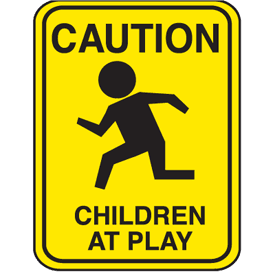 You never had any reason to expect that you could just barrel straight to your destination without anything slowing you down.
You never had any reason to expect that you could just barrel straight to your destination without anything slowing you down.
Your complaints about conditions to the contrary are grounded in that alternate mythic world created by the makers of TV commercials who put a lone car on an empty, closed course amid striking scenery. (And if that’s the world you drive in, it’s pretty easy to pass the person on the bicycle with more than three feet to spare.)
If you drive as if nothing can slow you down, it’s only a matter of time before you personally administer the death penalty or serious injury to a vulnerable user of the streets we all own and share.
[Tweet “Do you really want to hand down the death penalty just for biking or walking? No? Drive w/care.”]
Real Time, Not Imagined Time
Realistically, for how many minutes or seconds does someone riding a bike hold a driver back for more time than it takes to traverse a city block?
I’m serious when I say “seconds;” as anyone watching a really bad commercial can tell you, seconds can drag on for what seem like hours. (See a travel time comparison in the footnotes on this post about attitudes.)
Arterials have multiple lanes allowing a driver to get past a bicycle. The true elapsed time you’re “stuck” just isn’t that long if you time it. The 3-5 seconds you’re behind the bike before you can safely pass feel far longer than they really are.
If you’re in incredibly heavy traffic and can’t change lanes, in an urban setting you’re not going fast anyway and the person on the bike is probably keeping up with traffic just fine. I know I do and I’m not any kind of athlete. Sure, I’m going slower heading up Seattle hills than on the flat streets of downtown Spokane, but even so when motor vehicle traffic is heavy I may well pass cars if I have a bike lane since I take up less space than a car.
Your Challenge, Should You Choose to Accept It
If you’re going to complain about someone on a bike, what if you kept track of everything that creates a change of speed in your driving? You might be surprised.
Then when you get where you’re going and you can’t find a parking spot, imagine that a couple of the cars ahead of you weren’t there because those people chose to ride a bike instead. As a little reminder, take a look at the video in If Bikes Were Cars and Cyclists Were Drivers.
You might also get a very different sense of the passage of time if you rode a bike, but I already wrote that post.
Your Turn
(A Miss Bikey Manners request: Refrain from “all people who drive do X” or “all people who bike do Y” in your response. That’s lazy and fails the test of basic logic.)
- Do you think drivers notice people on bikes more than other traffic elements because bikes are in the minority, because they themselves haven’t ridden and thus biking is an oddity, or for some other reason?
- Answer quickly: When you think of a traffic slowdown what’s the first image that comes to mind?
- How can this point best be made when people complain about bikes? It’s so obvious, and yet so often overlooked.
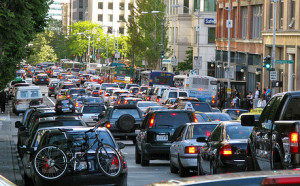

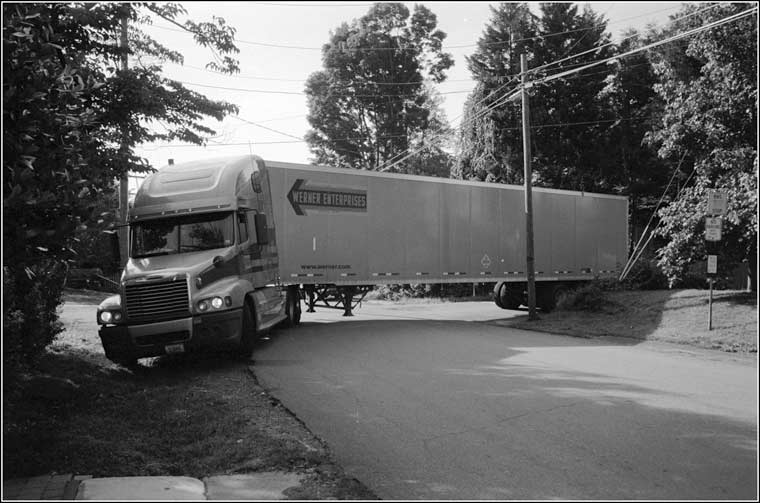
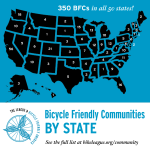
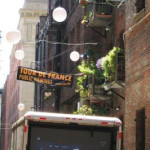
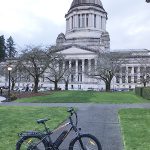
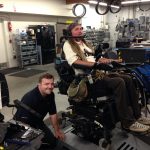
5 Comments
Reminds me of a quote from John Forester: “The cyclist who rides in traffic will either delay the cars, which is a Sin, or, if the cars don’t choose to slow down, will be crushed, which is Death, and the Wages of Sin is Death.”
Oh dear, that quote is just too close to home for comfort.
Whenever I drive, instead of biking, I’m always struck by how slow it actually is to go a few miles in the city. I’m always having to slow down/stop for all manner of things. Usually many other drivers trying to occupy the same space at the same time.
I hope that also applies to the ever increasing number of bicyclists who seem to think that they have the right to ride on the sidewalk as fast as they can without considering the peds on the sidewalk. I don’t mind folks biking on the sidewalk if they use caution and yield to peds like they’re supposed to.what I do mind is folks riding on the sidewalk to get away from the danger of fast cars having no problem doing to peds what they are trying to avoid themselves. Please treat the peds on the sidewalk with the same courtesy you want to receive from cars.
Someone using a bike on the sidewalk is supposed to proceed at a walking pace, and we tell people that.
Some cities allow bikes on sidewalks (Seattle, for example), others do not (Spokane doesn’t permit them on sidewalks in the central business district, but there’s no signage to tell you that).
Being visible and predictable whether you’re walking, biking, or driving will improve the courtesy of interactions for everyone, in every space.
2 Trackbacks
[…] Barb Chamberlain of Washington Bikes (nee Bicycle Alliance of Washington), however, reminds that our expectation of speedy, free-flowing traffic isn’t a natural born […]
[…] How come you don’t hear more drivers raging about this? Photo: Washington Bikes […]